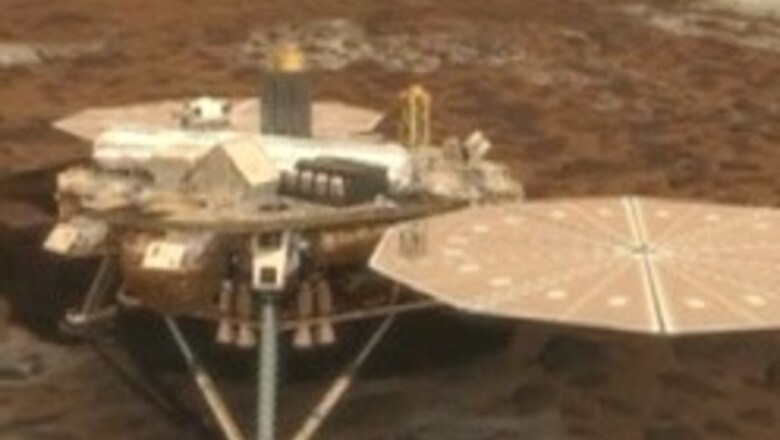
views
New Delhi: NASA plans to send a robot mission to Mars next month that will dig into the soil near the northern pole of Mars to check for conditions favorable to microbial life now or in the planet's past.
The Phoenix Mars Lander is due to launch some time between August 3 and August 24 from Florida for a landing on the frigid northern plains of Mars on May 25, 2008, NASA officials and mission scientists said on Monday.
The mission is due to last three months. NASA is eyeing a landing site devoid of boulders at latitude equivalent to northern Alaska on Earth.
Scientists expect the lander to operate in temperatures as low as minus 148 Fahrenheit (minus 100 C).
It is the latest mission by the U.S. space agency to seek a deeper understanding of Earth's next-door neighbor in the solar system, including whether Mars has ever harbored life.
"I think it's going to be a really exciting mission to the north pole We have been up here r first time and I'm really looking forward to this," Doug McCuistion, NASA's Mars exploration program director, told a news conference.
Assuming it survives a risky descent and landing, the lander will wield a robotic arm 7.7 feet long to dig up to three feet (one meter) deep to get at soil and frozen water thought to be lurking just under the surface, scientists said.
It will rely on a variety of equipment to assess whether this water may provide conditions that could support microbes.
"It's going to analyze the water," said Bobby Fogel, a NASA scientist. "It's going to get its chemical composition, its physical properties, and try to tell us something about the history of water on Mars and potential habitability for microbes on Mars."
The robot also will investigate how the water may change the chemistry and mineralogy of the soil, scientists said.
The Phoenix Mars Lander, with its solar panels unfurled, measures about 18 feet wide and five feet (1.5 meters) long.
Its mission is part of what the US space agency calls a "follow the water" strategy for exploring Mars. Water is considered a key ingredient for life.
Many scientists believe dry and desolate Mars was once far wetter, with evidence of bygone oceans, hot springs and other bodies of water.
Two small rovers still operating elsewhere on the Martian surface also are investigating the history of water on Mars.
The lander's arm will hoist soil and water samples to two instruments. One examines soil chemistry.
The other heats up soil and water to check for things like carbon-based chemicals seen as crucial building blocks for life.
Peter Smith of the University of Arizona, principal investigator for the mission, said the equipment can detect organic materials.
"We can't tell whether it's DNA or proteins, but we can tell they're complex organics," Smith said.
Unlike the rovers that survived the descent to the Martian surface with the help of air bags to cushion the landing, NASA will attempt the first "soft landing" on Mars in three decades with the Phoenix Mars Lander.
It will use a heat shield to slow its entry from space, and then a parachute will further slow its descent to about 135 mph (217 kph).
The lander will then free itself from the parachute and fire rocket engines to slow to about 5.5 mph (8.8 kph) before landing on three legs, NASA said.
(With agency inputs)



















Comments
0 comment